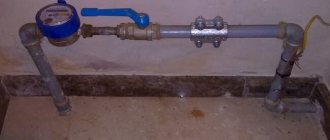Depending on the type of building, the distance to the waste collection sites varies. These can be not only specially paved areas with tanks, but also free-standing trash cans. Everything directly depends on the territorial features and type of structure. The minimum distance to residential and office premises should be 20 meters.
Private houses
In microdistricts of individual residential development, the distance between low-rise buildings and garbage cans is at least 20 m. When placing containers, it is recommended to take into account the distance to wells, boreholes, centralized water supply lines, and sidewalk paths. The standards require measuring the distance from a country cottage or dacha to the foundation, regardless of the distance of the fence. According to SNiP, the indentation can be only 1 meter. You cannot place trash cans above underground communication networks. This rule does not apply to airways. The main thing is that they do not block access roads for garbage trucks. To do this, they must be at a height of 6 meters. If it is not possible to comply with the standards for installing garbage containers in the private sector, then a commission is assembled, which includes representatives of local government, deputies, a health doctor, and communication service workers. During collection, the optimal location of the bins is calculated, and the possibility of increasing the distance is discussed. Otherwise, a 9-meter distance is allowed.
High-rise buildings
As mentioned earlier, the rules for installing garbage containers near multi-storey residential buildings indicate an optimal distance of 20-100 m. A waste collection site is organized behind the buildings or on the side. The sites are fenced with a fence made of low-transparent profiled flooring, zinc-coated iron, and concrete. Made from corrosion and fire resistant raw materials. It is important that the organized garbage disposal does not spoil the panorama opening from the apartment windows. Garbage cans should not block city views. In small areas built up with multi-apartment residential buildings, it is allowed to organize a single waste disposal site. There are 5 containers per organized zone. If there is a shortage of such quantities, waste areas are located nearby, separated by separate fences.
Kindergartens, schools, playgrounds
Kindergartens and school yards do not always have their own utility yard, fenced off from children. To prevent the future generation from experiencing discomfort from unpleasant odors, it is recommended to install garbage bins at a 20-meter distance from walking and play areas. The greatest distance is calculated from the door that opens the way to the outbuildings. In the school yard, garbage dumps are located at the back entrance. Often it is not used by students of the institution. The shortest distance is calculated from the main building, sports ground, workshops, and classrooms. Garbage trucks must freely approach containers without passing through the school yard accessible to children. Any playgrounds with sports equipment and equipment, walking areas must be located at a 20-meter distance from garbage disposals. If there are pedestrian roads near the school sports ground or recreation areas, then the location of the trash cans is calculated from the outer border of the paths.
Shopping and public places
Otkhodnik shops, various public organizations and infrastructure buildings are equipped in accordance with SNiP. If there is a commercial enterprise in the building, then the tanks for collecting solid waste are located at a distance of 20 meters from it. Organizational managers are responsible for violations and improper placement of containers. They are also obliged to maintain order in the surrounding area. In addition to cleaning the yard near buildings, it is necessary to provide store visitors with an adequate number of container structures. The trash can is installed by the managers of a commercial establishment or enterprise separately from the containers of residents of nearby houses. It is possible for such otkhodniks to live side by side with the consent of the management company and the homeowners. The garbage dump should be located at the back of the building, where buyers or visitors to the establishment cannot enter. Waste is removed according to the established schedule. Previously, management enters into a separate personal documentary transaction with communication services that monitor the timeliness of garbage removal.
In villages and urban settlements
Rural areas, villages and settlements are often located at great distances from communication services.
Transactions on the removal of solid waste are concluded by representatives of the village council. In SNT villages, such problems are resolved by board members. If there is a forest or protected area near a populated area, the waste disposal schedule is coordinated with environmental companies. Important information: If the settlement is located near the railway network, it is recommended to place garbage containers at a distance of 20 meters or more, so that the train windows do not have a view of the local garbage dump.
They are surrounded by fences on the road side. Since garbage is highly flammable, it is recommended to remove trash cans from electrical substations and energy distribution units at a distance of 9 meters or more.
SanPiN requirements for waste container sites
According to the SanPiN acts, a number of rules have been approved that are followed when arranging a new waste collection site.
These include the following provisions:
- When choosing a location, residents receive permission from the architect, SES and housing and communal services employee.
- SanPiNom established that the number of tanks on one site cannot be more than 5. Additional installation of containers is prohibited, since it is difficult to maintain cleanliness around and carry out regular sanitation. The number of bins is determined by the number of residents and the volume of waste.
- The area should be concreted or asphalted, located at a minimum angle to simplify the transportation of tanks. The entrance is cleared for the unhindered movement of special vehicles.
- The site must be fenced. Borders, green spaces, and a fence more than 1 m high are installed on 3 sides.
- A prerequisite is the presence of a lid. It should fit tightly to the tanks, preventing precipitation from entering, and also protect the contents from animals and wind.
- The distance from the waste storage site to buildings is 20-100 m.
Resolution No. 1039 came into force on January 1, 2019. According to it, such structures must be included in a unified register. The costs for fulfilling obligations are borne by compulsory health insurance. According to the law, plots are allocated on state land.
To legitimize the site, you need to perform the following steps:
- The company sends a written document to local authorities with a requirement to organize a place for collecting solid waste.
- Wait for a positive decision.
- The management company handles the registration, and upon completion of the work, submits the data for inclusion in the unified register.
If the decision is positive, you can begin operation. If rejected, the management company eliminates the shortcomings and resends the application.
Indicated:
- Exact location address and diagram. You need a map with coordinates.
- Technical specifications information.
- Information about the owner of the plot.
- Information about the source of waste generation.
In order for local authorities to approve the application the first time, you need to provide as detailed information as possible and prepare the site in accordance with all the requirements.
Solid waste sites
Solid waste from household areas is transported according to a schedule to waste processing plants or landfills intended for waste collection. Solid waste is removed using specialized transport.
Construction waste is sent to equipped landfills. Garbage that cannot be disposed of is transported to special storage facilities, where it is disinfected and subject to burial (by burying it in the ground).
General requirements:
- the main objects are apartment buildings and the private sector, places for cultural recreation, territories of factories, enterprises, organizations, parks, public gardens;
- mandatory facilities - healthcare organizations (hospitals, hospitals, sanatoriums) and beaches;
- places must be specially equipped, waterproof tanks with a lid;
- the number of containers in the areas is calculated taking into account the number of residents and the volume of garbage collected over a certain time.
Sites, according to GOST, must be asphalted or concreted. The area next to the containers is fenced on 3 sides.
If the containers do not have lids, then the fences are made with an overlap so that moisture does not penetrate into the tanks and does not provoke premature rotting.
Nowadays, various organizations can offer turnkey construction services for waste disposal sites of any size and color.
Small platforms can accommodate 2 containers, large ones - up to 6 tanks.
Formula for calculating the volume of garbage
How much garbage accumulates in one day (cubic m/day) is determined by the following formula:
C = (P*N*Kn)/365
, Where:
- C – determined volume of MSW accumulation per day.
- P – the number of residents of an apartment building who will throw away household waste.
- N is the annual rate of solid waste accumulation per person living in the house.
- Kn – waste accumulation coefficient 1.25. Shows uneven accumulation of solid waste.
- 365 is the number of days in a year.
The numerical value of the norm N is established by government decree and depends on the nature of the housing stock:
- comfortable houses - 1.32 cubic meters. m;
- houses without running water and sewerage - 1.5 cubic meters. m;
- private sector households - 2 cubic meters. m.
The calculation formulas are designed to determine the sufficient volume of containers, taking into account their maximum filling with waste.
MSW sites
Federal Law No. 89 of June 24, 1998 “On Production and Consumption Waste” clearly regulates the creation and maintenance of places intended for the storage of MSW.
Clause 2 of the Rules for the Management of Municipal Solid Waste, which was approved by Government Decree No. 1156 of the Russian Federation “On the management of MSW”, states that the place for their collection must comply with the standards and undergo regular sanitary treatment.
The responsibility to monitor the maintenance lies with the companies and owners of the sites where the waste collection site is equipped. They also do repairs and painting. Obligations for waste removal and equipment purchase were assigned to the regional operator.
To remove waste from construction sites and areas adjacent to shops and office premises, additional containers are installed that can hold up to 8 cubic meters.
Requirements for MSW and MSW sites
First, let's understand the concepts of MSW and MSW. After the adopted amendments to the law “On Production and Consumption Waste”, the concept of MSW – municipal solid waste – appeared for the first time. The responsibility for storing and removing these raw materials was assigned to public utilities.
The bulk of the garbage in modern cities is ordinary household solid waste (MSW), which is generated daily: food debris, glass, plastic, cellulose, etc. Municipal waste (MSW) includes waste that accumulates in residential or non-residential premises during activities person or organization, for example, consumer goods that have lost their original purpose.
In the above-mentioned law, the terminology of MSW serves primarily to distinguish between types of waste and, accordingly, standards and tariffs for ordinary people and enterprises. It is obvious that entrepreneurs and organizations with large staff throw away much more garbage in the course of their activities than the average resident.
The organization of the container site is carried out by local utilities. When installing and maintaining these territories, they must be guided by the requirements enshrined in the instructions “Sanitary rules for maintaining the territory of populated areas SanPin 42-128-4690-88. These include:
- It is mandatory that in the area of residential buildings there must be special areas fenced on at least three sides. The height of the fence should be at least 1–1.5 m to prevent the wind from blowing debris into the nearby area. The location must be such that there is clear passage for the garbage truck. There should be no vegetation within a radius of 10 meters.
- Garbage containers must be located at a distance of at least 20 meters from residential buildings, children's and sports grounds, but no more than 100 meters.
- Garbage containers should be installed on a concrete or asphalt base at a height of 10–20 cm from the ground level so that rain streams do not fall under them. Sealable tanks are required.
- The number of storage bins depends on the number of houses located nearby. On average, the site size should accommodate from 3 to 5 waste containers.
- Garbage must be removed daily, and containers must be cleaned and treated with disinfectants at least once every 10 days, with the exception of winter.
- Possibility of installing covered fences for private sector owners.
Security measures, fencing of the container area
Iron tanks are often stolen by antisocial elements to be taken to scrap metal collection points. To avoid such incidents, management companies are forced to resort to protective measures:
- Fences with gates are being erected in the areas. Residents can freely throw out trash, but there is no way to remove the bin.
- Locks are being installed. Only drivers of specialized vehicles involved in the removal of solid waste and solid waste have keys.
- The management company's stamp is placed on the tanks. This protects against the containers being used elsewhere or scrapped.
- An alarm is installed.
- Video surveillance is underway.
These measures usually prevent theft of tanks. Management companies keep strict records, and administrative fines are levied for the lack of the required number of containers.
Site fencing is an important part of the structure. Recommendations for their arrangement:
- the best and most affordable material is metal profile;
- height from 1 to 2.5 meters, as required by SanPiN standards;
- structures can be with or without a roof, but the tanks must be fenced on 3 sides.
Usually simple options with 2 tanks and more reliable ones with fences are installed.
Types of waste collection containers
Reservoirs are divided into 3 main types, including containers, storage bins, and urns. There is a division into groups according to purpose, volume and materials of manufacture.
By purpose
Construction companies make containers for different purposes. Tanks are:
- manufactured for specific purposes - differ in size, quality, shape;
- intended for storage of solid waste;
- designed for transporting bulky waste.
Containers must be durable and of high quality.
By volume
The size depends on the place of use. Containers are:
- Plastic. They are used in the private sector and come in different sizes. These are small tanks with a volume of 60 to 320 liters. They are installed near personal plots and require frequent emptying.
- Old style. Their capacity is 0.5-0.7 m³. They are found in small settlements and are gradually being withdrawn from use.
- New model - Euro containers. This is a galvanized metal tank. This option is becoming popular not only in Russia. Tank volume is 1.1-1.3 m³, there is a lid.
- Large containers with a volume of 2.5-5 m³. They are used to collect separate and industrial waste.
- Boat tanks with a volume of 1.3-15 m³. They are used by construction companies or when performing installation work.
- For large-sized waste, use bulk containers with a capacity of 1.9-40.3 m³.
Container modifications vary depending on the manufacturer and its operating standards.
Manufacturing materials
Metal and plastic tanks are popular. The first option is more durable, but the plastic analogue also has many advantages.
Advantages of plastic containers:
- light weight;
- convenient forms;
- suitable for the private sector;
- do not rust;
- do not respond to temperature changes;
- durable;
- convenient to transport.
One of the disadvantages is the size - large-sized garbage will not fit in them.
Advantages of metal tanks:
- universal - can be used for any type of waste;
- the shelf life is much longer than that of plastic analogues;
- variety of forms;
- possibility of protection against corrosion;
- volume from 0.5 to 15 m³.
Disadvantages include dimensions and weight. But most organizations don't pay attention to this.
The need to sort waste
Every year there is more and more garbage on the planet. The authorities of the countries allocate huge amounts of money for the construction of landfills for the collection of household waste, for which a huge area of clean land is allocated. Equipment and technologies for processing secondary raw materials are being improved.
However, the “garbage problem” remains. Under the sun's rays and downpours, mixed waste rots and releases toxic substances, poisoning the atmosphere, land and groundwater. Spontaneous combustion of this “explosive” mixture often occurs, causing even greater harm to the environment.
Carrying out “garbage” reform, on January 1, 2021, a new law on sorting waste before disposal came into force. At the same time, the presidential order on the creation was signed. Thus, the state took control of the processes of collection, storage and disposal of household waste.
Container site with separate waste collection
Indoor separate waste collection area for 4 containers
Many countries have been successfully using waste sorting systems for several years now. Citizens were required to sort garbage by dumping it in appropriate containers. The system for marking tanks for various waste has proven itself well. Depending on their purpose, they may have different colors or inscriptions. The relevant housing and communal services are required to install such containers separated by type of waste.
At the household level, it is customary to sort waste according to its intended purpose:
- glass products;
- packaging and bottles for juices and canned goods made of metal;
- packaging paper, newspapers, cardboard and other cellulose items;
- textile products;
- leftover food;
- deteriorated batteries, batteries, LED lamps, etc.
For convenience, so that going to the container does not turn into an unpleasant procedure, it is better to sort the garbage at home, placing it in bags or containers in advance.
The process of sorting waste can be called a noble cause, since by spending a little time, everyone will contribute their bit of care for the environment and the planet as a whole.
Features of the location of garbage containers
Before equipping the site, they study the rules for installing garbage containers. Legislative acts clearly regulate the boundaries. If any of the points are not observed, you can write a complaint.
It is important to consider the distance of the MSW site from crowded places. Recommended distances to:
- Health care institutions - 50 m.
- Shops and entertainment complexes - 30 m.
- Parks, recreation areas, squares - 50 m. 1 storage device is installed on 4000 m².
Drives should not be installed near highways, pedestrian paths, or on narrow streets. Temporary installation of tanks in areas with construction work is possible, but not longer than 24 hours.
SanPiN standards for the installation of garbage containers
Decaying garbage leads to the spread of a stench, which attracts various animals (cats and dogs), and insects.
Sanitary and epidemiological standards 42-128-4690-88 help to understand the rules for installing tanks. This applies not only to local areas, but also to places that people actively visit.
Garbage collection sites are organized not only near houses, but also shops, various enterprises, medical institutions, and parks.
SanPiN 2.1.2.2645-10 regulates where storage tanks are installed and the frequency of their emptying.
Tanks must be emptied daily.
Additional standards
The collection of SanPiN 42-128-4690-88 makes it possible to calculate the required number of special containers for waste: how many of them should be located in the area near residential buildings. The basis for calculations is the population size in a particular segment and the accumulation rates of various types of waste.
Metal container for garbage
Note that on private territory the distance from the house to the containers, especially in SNT, where the area of the plot is limited, the owner can reduce to 8 m by written agreement with the neighbors or the board of the gardening partnership. This is an exception that can be taken into account when determining how many meters should be removed in a private home.
Moreover, this is only possible provided that the remaining distances are maintained in strict accordance with SNiP (SP). The distance from the house to the garbage container cannot be limited to 8–10 m without special permission. And if the presence of a trash can causes complaints from owners of other land plots, the issue can be resolved in different ways:
- inviting a commission from the district administration to resolve the problem of distance from home;
- participation of independent and disinterested public representatives in resolving the issue;
- involving a deputy from the local council in resolving a controversial situation;
- in court, by filing a claim for an administrative violation, if the standards for placing garbage cans, garbage dumps or containers from the house contradict SNiP (SP) or SanPiN.
In the city
In the latter case, grounds for a claim can also be created if the rules for the location of garbage containers are violated, and not just the distance rules. Container sites for garbage cans should not be located near pedestrian paths (even just narrow paths or passages), near the roadway or lawn, equipped according to the rules.
If construction work is underway in a house, the owner retains the right to install tanks or special containers for garbage in the private sector, but this is allowed for no more than a day, and only with the permission of the SES and regional architecture. The same rule applies to houses and public buildings when carrying out repairs or refurbishment to store waste.
Standards for installing garbage containers in courtyards of high-rise buildings
Before constructing an apartment building, a construction company selects a site for garbage containers. You need to be careful when choosing a place. An incorrectly selected area can cause violations of hygiene standards and even fires. The distance from the house will lead to clogging of other areas, because not all residents will reach the garbage cans.
The approval of plots takes place in the presence of property owners, the management company and local authorities.
A prerequisite is that the object be located 20 m or more away from houses, sports grounds, and park alleys. If there is no such place, then the distance can be reduced to 9 meters. But the site cannot be developed further than 100 m from the house - this is done for the convenience of residents. The number of tanks is calculated taking into account the number of residents and the volume of MSW they throw out.
You can place no more than 5 tanks on one site. In neighborhoods, several waste disposal sites are installed in one place. Each must have individual fencing and no more than 5 tanks.
The sites are located in such a way that there are no problems with the access of special equipment.
Recycling bins are installed near each entrance of a multi-storey building. Removal is carried out as they are filled.
Standards for placing garbage containers from residential buildings
SanPiN regulations (sanitary rules) are adopted on the basis of ongoing scientific research and are aimed at the safety of citizens and their everyday amenities. Based on this, the distance to garbage cans from the house cannot be, according to sanitary standards, less than 20 and more than 100 meters.
Platform with tanks
When the distance between the house and the garbage container is less than the standard regulated by SanPiN, it does not fulfill its intended purpose.
But when the distance from the trash bin is greater, it will create discomfort for residents who are forced to walk a great distance with garbage every day. Different categories of the population live in apartment buildings, and it is especially difficult for older people to carry out such raids to the trash bin.
In 2021, the company that won the tender for this activity must be responsible for the removal of waste and the maintenance of waste collection containers. Previously, the fulfillment of these obligations (timeliness of garbage removal, sanitation of garbage containers and areas for bins) had to be monitored by the head of the district housing management.
Small garbage dump in front of a residential building
At least 3 participants in the process must decide how to locate sites with garbage containers - sanitary inspection authorities, the architectural department and the housing department.
In cases where the norm defining the proper distance from a garbage can or container to a residential building is, for some reason, impossible to implement, a decision is made by a special commission.
Distance to public buildings
In every city there are buildings that are visited by many people every day. Garbage containers are installed in such a way that unauthorized persons do not have access to them.
They are installed in backyards away from buildings. It is imperative to provide access for special vehicles.
If it is not possible to place bins 20 m away, then the distance can be reduced to 9. But the waste collection area is arranged in such a way that passers-by do not have access to it.
Waste is removed according to the schedule established by the regional operator.
Location of waste containers in the private sector
SNiP 30-02-97 allows residents of the private sector to independently choose a place to install garbage containers. The site is located no closer than 10 m from personal plots and no further than 100 m. Fences are required, since there are more stray animals in the private sector.
After agreeing on the location, the service company:
- arranges a site for collecting solid waste;
- removes waste using a specialized vehicle;
- regularly cleans the area;
- clears space for the entrance.
Owners of private residential buildings can get rid of organic waste by burying it on the site, and throw inorganic waste into a bin on the street.
Standards for accumulation of solid waste
For residential buildings, the norm of solid household waste is calculated per 1 person, for government institutions (hospitals, museums, libraries) - per 1 visitor, in office buildings - per 1 worker.
The calculation of solid waste for a residential building is carried out as follows: the number of residents is multiplied by the rate of waste generation for 1 person. The resulting result is divided by 365. Thus, the level of solid raw materials generated per day is obtained.
Let's give an example of calculation for a tank with a volume of 1.1 m3 using this method. Let’s take 1.4 m3 as the accumulation standard, and 500 people live in the yard. Then the calculations will be as follows:
Required number of containers = (500*1.4/365)*1.1= 2.1.
Therefore, for daily garbage removal for a yard of 500 residents, it is necessary to install 2 tanks with a volume of 1.1 m3.
In rural areas and urban settlements
SNT (garden non-profit partnerships), urban settlements, GSK (garage construction cooperatives) collect waste in designated areas. The tanks are placed near houses so that residents do not have to walk far.
Standards for installing garbage containers in the private sector of rural areas are regulated by law. The following violations are common:
- Installation of fillers at a distance of less than 9 m from the gas distributor and power plant.
- Accommodation near the highway and railway. The site is fenced from the side of the highway and should be no closer than 20 m from them.
If there is a forest in the village, or it is part of a nature reserve, then before installation you need to obtain permission from an environmental organization.
The management company must regularly remove garbage from the bins and monitor the cleanliness of the site in the village.
Unauthorized dumping of garbage will result in a fine for the offender.
List of standards
The current fundamental document, which defines all thematic requirements, is SanPiN dated June 10, 2010.
It establishes rules for installing garbage containers near residential buildings of different heights, schedules for emptying containers and other information.
Sanitary standards are also regulated in other documents:
- innovations under Federal Law No. 505 - legislative norms on standards for storage and disposal of solid waste;
- SanPin from 1988 - regulate the shortest distance from the sewage tank to the living space;
- SNiP - the distance for the placement of otkhodniks from private houses in individual development areas has been determined.
The requirements of current legislation apply to existing residential complexes and are necessarily taken into account when designing new buildings and structures.
General rules for the location of tanks
Garbage containers are placed at a distance of 20 to 100 m from any residential buildings, crowded places, and government institutions.
The exact numbers depend on the specific zone:
- residential high-rise building – 100 m;
- medical establishments – 50 m;
- markets, shopping centers – 30 m;
- children's playgrounds, sports areas - 20 m;
- drinking springs in rural areas – 50 m;
- park areas - 50 m from the place where people gather.
On the site near a high-rise building you can place from 2 to 5 tanks . The exact number is determined by the number of inhabitants. If 5 containers are not enough, another site is equipped nearby.
Installation of containers and garbage bins on the territory of organizations
Garbage cans near shops and organizations are installed taking into account SanPiN standards. Garbage containers should be located at a distance of no closer than 20 m.
Managers are required to monitor the cleanliness of the area and install trash cans for visitors. A ballot box that is more than ⅔ full is a violation. For this, the manager may be subject to an administrative fine.
Waste collection areas for organizations and shops are allocated in the backyard. Outsiders should not have access to trash cans.
The head of the organization enters into an agreement with the regional operator for waste removal according to schedule.
Installation of storage tanks in cemeteries
A pressing problem is the littering of cemeteries and the formation of spontaneous landfills. Most often, this is explained either by the complete absence of garbage containers on the territory, or by their small number and considerable distance from the graves.
There is no clear regulation of this issue in government regulations and acts . They stipulate only standard requirements - fences, hard covering of the site, free access. Such important aspects as distance to graves and removal times are not included in state regulations.
Rules and requirements for installing containers in a cemetery are established by municipalities . Therefore, in each individual region of Russia, the distance and frequency of emptying storage tanks in cemeteries differ. Unified specific standards for the entire country have not been developed.
So, the norms and rules for installing garbage cans are specified in a number of documents. All issues related to the placement and maintenance of storage tanks are regulated in the regulations of SanPiN and SNiP. In them you can find specific figures for the distance of containers from public places and residential buildings. But some important requirements (for example, exact rules for placing containers in cemeteries) are not spelled out in government regulations.
Distance from kindergarten, school
A kindergarten or school does not always have a separate yard for economic activities. If there is no such place, then the site for the waste collection site is selected in accordance with SanPiN standards and agreed with the management company and the administration of the locality.
The garbage container must be located at least 20 m from the place where children walk. It is advisable to choose a site in the backyard - where no one walks. Thus, the waste collection site is removed from the building and playgrounds.
Access to the tanks is not through the main yard, but through a separate gate.
Collection, storage and disposal of waste in medical institutions
SanPiN 2.1.7.2790-10 regulates the collection of solid waste in medical institutions.
Since some waste is hazardous, garbage cans must be securely protected.
Garbage collection areas are located no closer than 50 meters from the hospital building.
Garbage is removed according to schedule at the specified time. Collected waste is transported in specialized vehicles to the disposal and disposal site.
Formula for calculating the number of solid waste containers
Containers are counted using the following formula (pieces):
N = (C*T*Kr)/(V*Kz), where:
- N – number of containers (pcs.).
- C – daily volume of waste.
- T – maximum time of accumulation of solid waste in the collection. In winter, waste is removed less frequently than in summer - once every three days, so the maximum time is T = 3.
- Kr is an adjustment factor that takes into account the refilling of the tank with garbage remaining after unloading. Kr=1.05.
- Kz is a coefficient that provides for filling the container with waste not to the top, but to three-quarters. Kz=0.75.
Who is responsible for maintaining garbage containers?
According to the law, local governments are responsible for the arrangement of waste sites.
Part 8 art. 23 No. 458-FZ states that the removal of MSW is a paid service. It is provided by a regional operator who sets a waste collection schedule and a fixed price for the work.
RF PP No. 1156 regulates the work of the regional operator - collection, transportation, and destruction of waste.
The management company is responsible for the maintenance of the site. The area is cleaned and sanitized regularly. Until recently, the owner of the land was responsible for cleaning.
New scheme for cleaning container sites
After the reform, RF PP No. 1572 differentiates the obligations for the maintenance of containers between the regional operator and the management company.
Who is responsible for what:
- The management company prepares the site and registers it in the All-Russian Register.
- Residents of the house collect garbage and place it in containers.
- The regional operator draws up a schedule for waste removal: at least once a day at temperatures below 5 degrees and at least 3 times a day if it is warmer than +5.
- The management organization monitors the cleanliness and hygiene of the site.
The new procedure simplifies the work of the management company and the regional operator.
A specialized vehicle must arrive at a clean site. After loading waste, employees clean up after themselves.
This ensures constant cleanliness of the waste collection area.
An example of calculating the number of waste bins
For example, let’s calculate the number of garbage containers for a comfortable high-rise building housing 200 people.
- We determine how much MSW (municipal solid waste) per day will accumulate at the facility:
C = (P*N*Kn)/365 = (200*1.32*1.25)/365 = 247.5 / 365 = 0.904 (cubic m/day)
- Let's calculate how many containers are needed, the volume of each is 2 cubic meters. m:
N= (C*T*Kr)/(V*Kz) = (0.904*3*1.05)/(2*0.75) = 2.8/1.5 = 1.89.
We round the resulting value and get 2 containers (2 cubic meters each).
How often should garbage be collected?
The garbage collection service is paid and provided by the regional operator and management company. Each owner of real estate signs an agreement on the removal of solid waste. After this, the regional operator sets a schedule for waste removal.
Garbage containers near multi-storey buildings are being emptied:
- in summer 1 time per day;
- in winter 1 time every 3 days.
If containers fill faster, a specialized vehicle arrives more often.
Indicators used for calculation
To correctly calculate the number of garbage containers installed near a residential building, the following data is required:
- The number of residents who will use garbage cans.
- The amount of garbage thrown out by each resident, which is taken to be equal to the average standard indicator of solid waste accumulation per person per year and is measured in cubic meters.
- The period of accumulation of solid waste in tanks, depending on the garbage collection schedule.
- The volume of the container that is planned to be used.
The peculiarities of filling containers must also be taken into account; for this purpose, special coefficients are introduced that take into account:
- uneven filling of the tank;
- the need to fill the container with garbage not to the very top;
- refilling the tank with garbage swept from the site after removal of solid waste.
By multiplying the number of residents, the rate of garbage thrown per person and the time of accumulation of solid waste in tanks, you can find out the volume of waste that is collected at the time of removal.
To calculate garbage containers, you need to divide the resulting value by the volume of one tank, taking into account correction factors. All these calculations are performed using the formulas below.
Maintenance and servicing of container waste collection sites
After the site is equipped and put into operation, the management company is responsible for its maintenance.
RF PP No. 491 dated August 13, 2006 regulates the maintenance of solid waste collection sites. According to it, the organization of the place and maintenance is entrusted to the management company.
The garbage is removed by a specialized vehicle from a regional operator.
Responsibilities are divided and must be carried out strictly. In case of violations, residents can file a complaint with the local administration.










